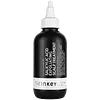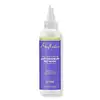What's inside
What's inside
 Key Ingredients
Key Ingredients

 Benefits
Benefits

 Concerns
Concerns

 Ingredients Side-by-side
Ingredients Side-by-side

Water
Skin ConditioningPropanediol
SolventSalicylic Acid
MaskingBetaine
HumectantPanthenol
Skin ConditioningPEG-40 Hydrogenated Castor Oil
EmulsifyingPhenoxyethanol
PreservativePolyquaternium-37
Hexylene Glycol
EmulsifyingCapryloyl Glycine
CleansingCitronellyl Methylcrotonate
MaskingSodium Hydroxide
BufferingEthylhexylglycerin
Skin ConditioningXylitylglucoside
HumectantTrisodium Ethylenediamine Disuccinate
Water
Skin ConditioningSodium Methyl Cocoyl Taurate
CleansingCocamidopropyl Betaine
CleansingGlycerin
HumectantButyrospermum Parkii Butter
Skin ConditioningAcetic Acid
BufferingNiacinamide
SmoothingStearamidopropyl Dimethylamine
EmulsifyingGluconolactone
Skin ConditioningRosmarinus Officinalis Extract
AntimicrobialCentella Asiatica Extract
CleansingHydroxyethylcellulose
Emulsion StabilisingCarbomer
Emulsion StabilisingSodium Hydroxide
BufferingMenthol
MaskingCitric Acid
BufferingSodium Alum
AstringentWater, Sodium Methyl Cocoyl Taurate, Cocamidopropyl Betaine, Glycerin, Butyrospermum Parkii Butter, Acetic Acid, Niacinamide, Stearamidopropyl Dimethylamine, Gluconolactone, Rosmarinus Officinalis Extract, Centella Asiatica Extract, Hydroxyethylcellulose, Carbomer, Sodium Hydroxide, Menthol, Citric Acid, Sodium Alum
 Reviews
Reviews

Alternatives
Ingredients Explained
These ingredients are found in both products.
Ingredients higher up in an ingredient list are typically present in a larger amount.
Sodium Hydroxide is also known as lye or caustic soda. It is used to adjust the pH of products; many ingredients require a specific pH to be effective.
In small amounts, sodium hydroxide is considered safe to use. However, large amounts may cause chemical burns due to its high alkaline.
Your skin has a natural pH and acid mantle. This acid mantle helps prevent harmful bacteria from breaking through. The acid mantle also helps keep your skin hydrated.
"Alkaline" refers to a high pH level. A low pH level would be considered acidic.
Learn more about Sodium HydroxideWater. It's the most common cosmetic ingredient of all. You'll usually see it at the top of ingredient lists, meaning that it makes up the largest part of the product.
So why is it so popular? Water most often acts as a solvent - this means that it helps dissolve other ingredients into the formulation.
You'll also recognize water as that liquid we all need to stay alive. If you see this, drink a glass of water. Stay hydrated!
Learn more about Water